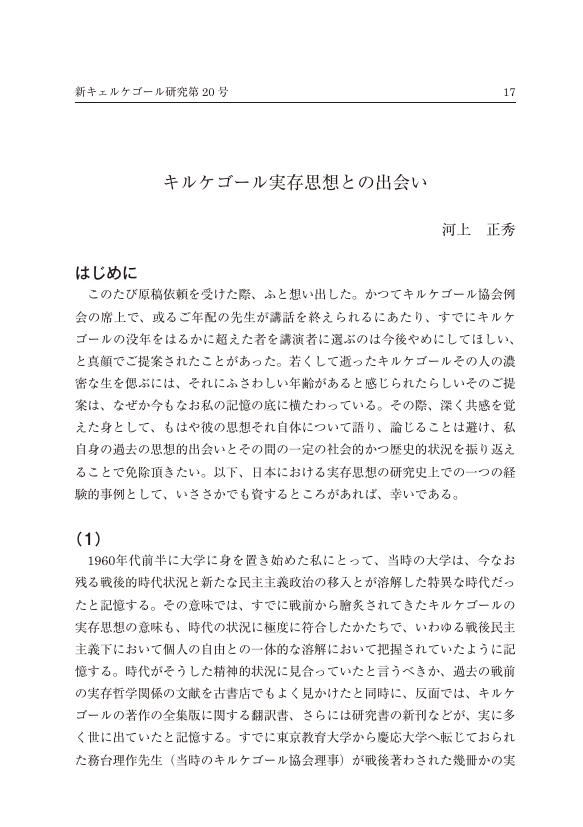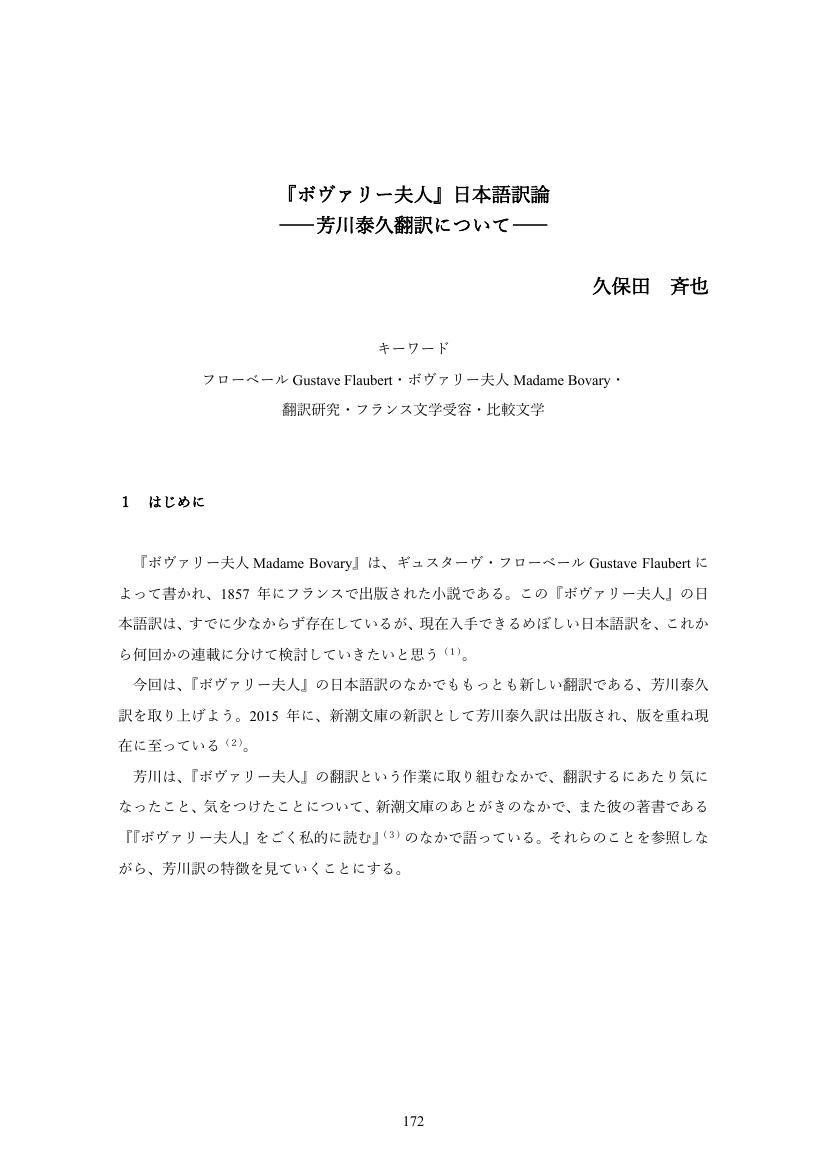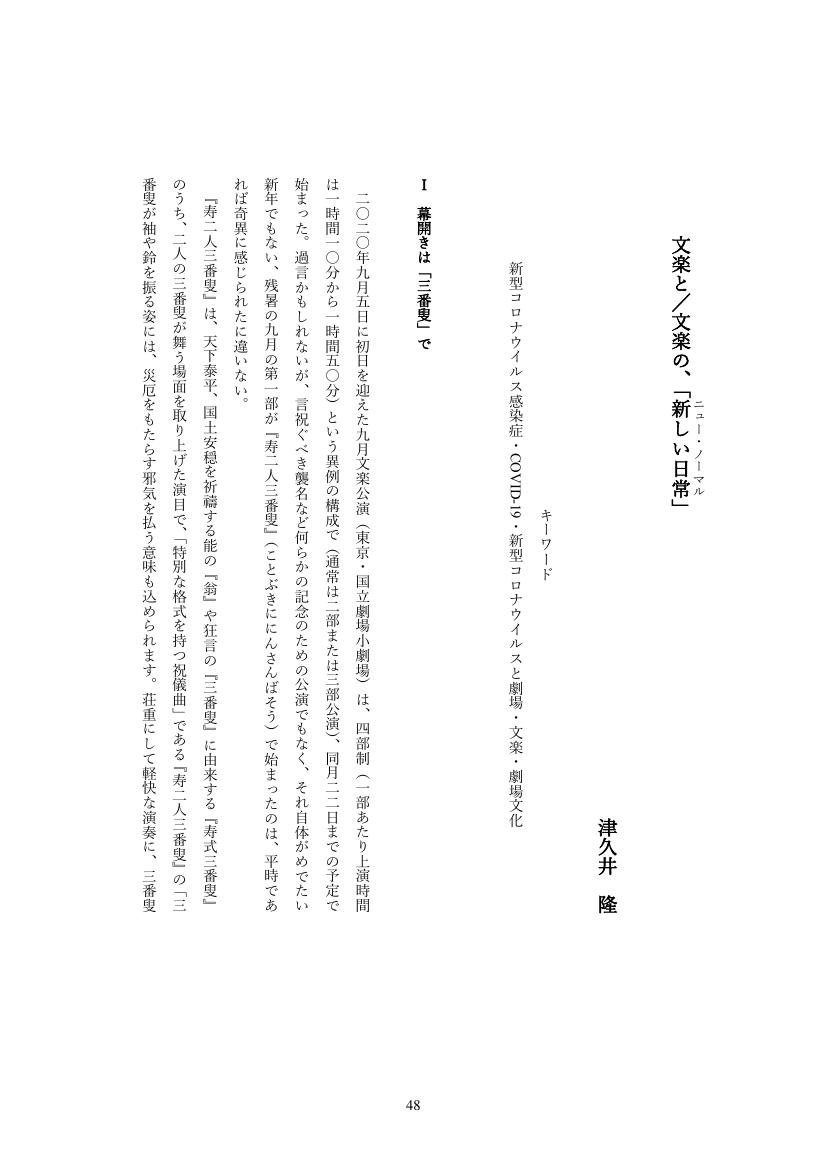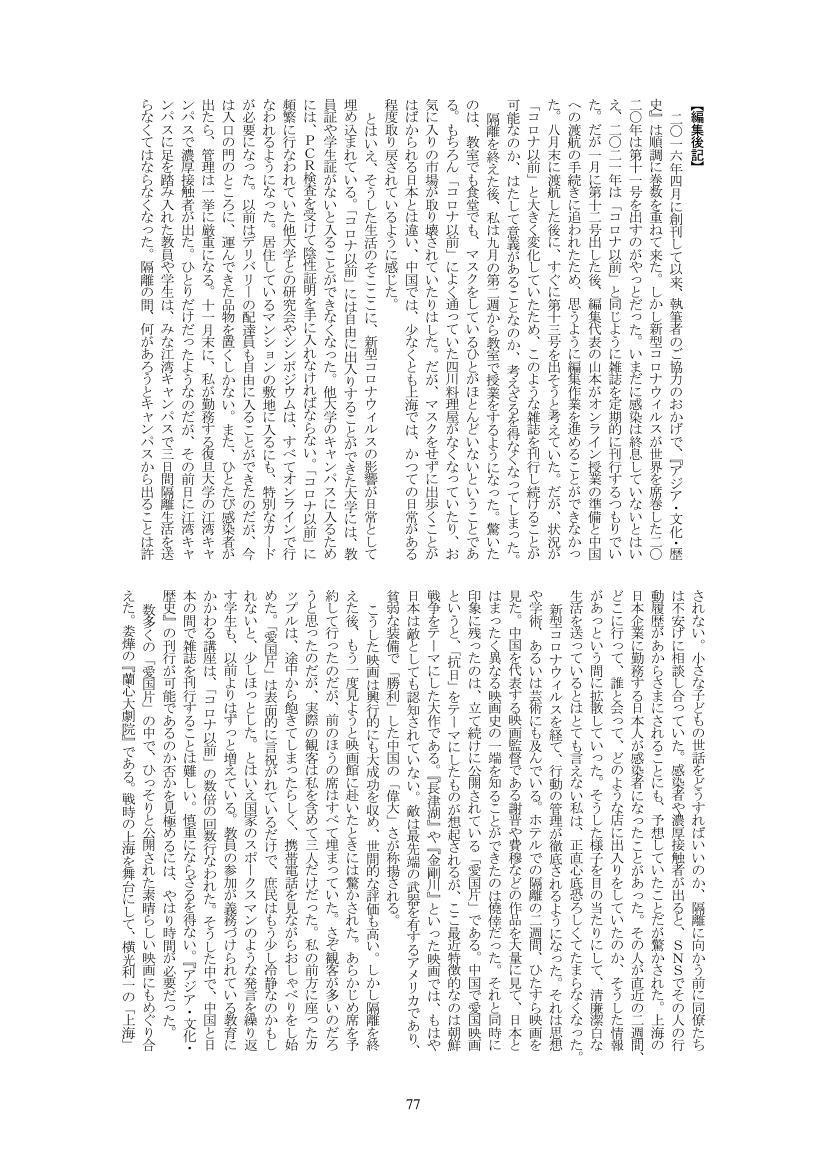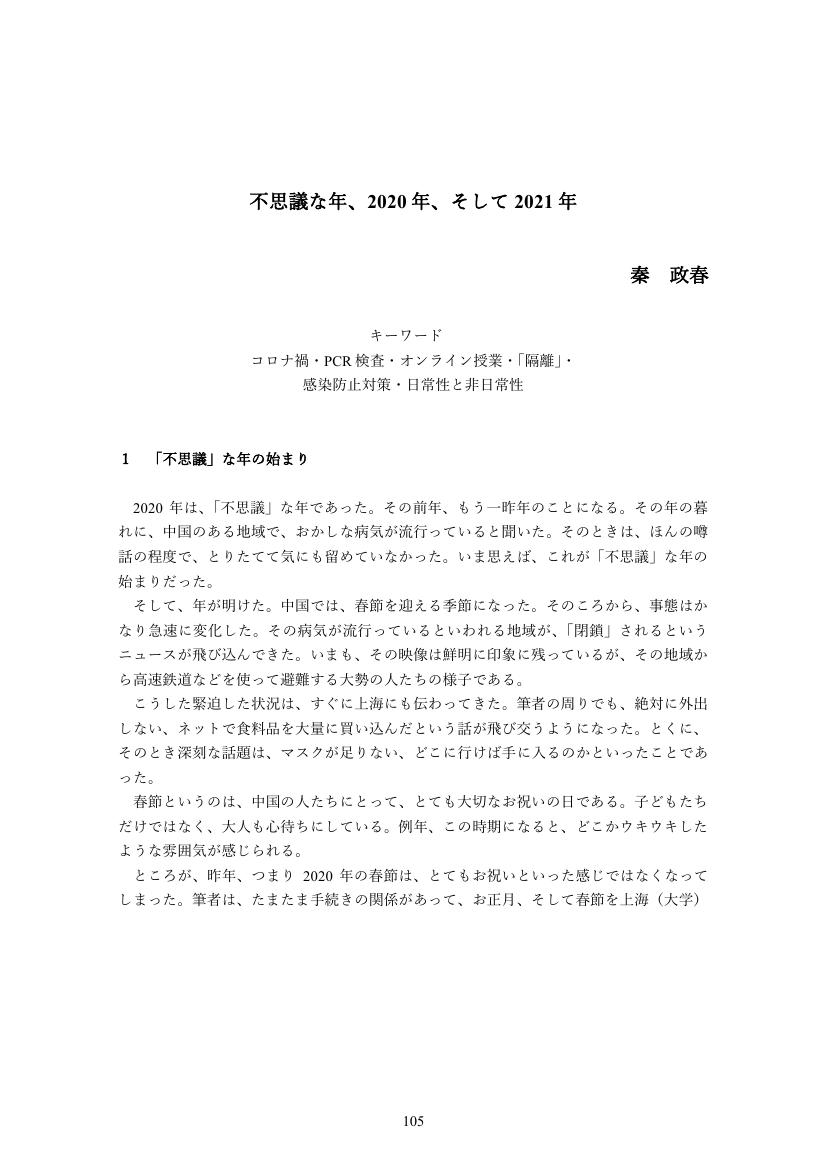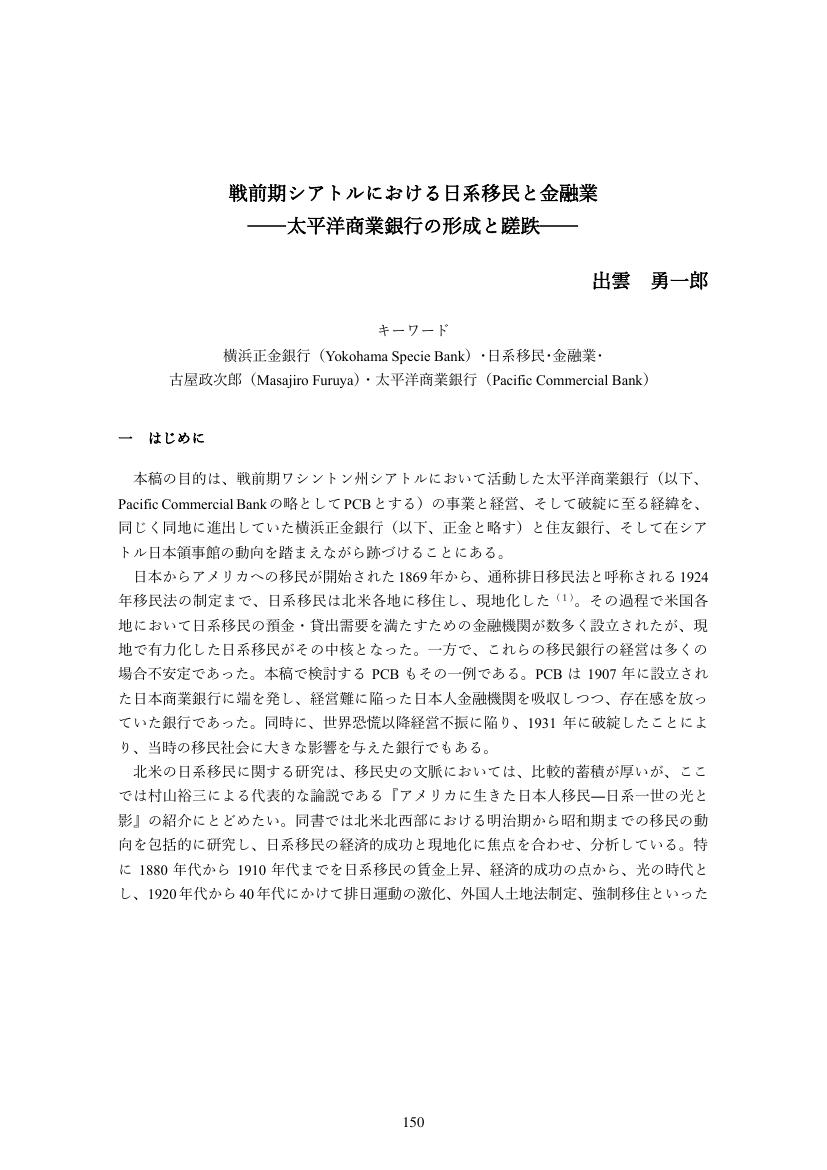- 著者
- Masaaki Katsuragi
- 出版者
- The Japanese Society for Mathematical Economics
- 雑誌
- 数理経済学会誌 (ISSN:24363162)
- 巻号頁・発行日
- vol.1, pp.117-125, 2022 (Released:2022-03-31)
- 参考文献数
- 19
Economics has been criticized for lacking reality for a long time. Lawson (1997, 2003) argues that its neglect of ontology is the underlying cause of this problem rather than just the unrealistic assumptions of the models. He espouses social ontology for economics, elaborating the nature of social being. First, I examine this claim from the viewpoint of a philosophical realism, and make it clear how critical realism theorises the reality presupposed by natural science. Second, I examine Searle’s social ontology (Searle 1995, 2009) as a representative argument for philosophical theorizing of social reality. I agree his dissection of social reality, however, his theory of the creation of social reality seems to rely on the linguistic aspect too much to make sense of the materiality of the social realm. Therefore, thirdly, I sketch out how the emergence of social reality is inseparable from the emergence of economic reality as a possible solution to the morphogenesis of social reality.
- 著者
- Norio Takeoka Takashi Ui
- 出版者
- The Japanese Society for Mathematical Economics
- 雑誌
- 数理経済学会誌 (ISSN:24363162)
- 巻号頁・発行日
- vol.1, pp.67-86, 2022 (Released:2022-03-31)
- 参考文献数
- 39
A decision problem under uncertainty is often given with a piece of objective but imprecise information about the states of the world such as in the Ellsberg urn. By incorporating such information into the smooth ambiguity model of Seo [35], we characterize a class of smooth ambiguity representations whose second-order beliefs are consistent with the objective information. As a corollary, we provide an axiomatization for the second-order expected utility, which has been studied by Nau [28], Neilson [30], Grant, Polak, and Strzalecki [16], Strzalecki [37], and Ghirardato and Pennesi [11]. In our model, attitude toward uncertainty can be disentangled from a perception about uncertainty and connected with attitude toward reduction of compound lotteries.
- 著者
- Chiaki Hara
- 出版者
- The Japanese Society for Mathematical Economics
- 雑誌
- 数理経済学会誌 (ISSN:24363162)
- 巻号頁・発行日
- vol.1, pp.87-116, 2022 (Released:2022-03-31)
- 参考文献数
- 18
In the Capital Asset Pricing Model, we consider how introducing new tradable assets into markets will affect the prices of the existing ones. We prove that introducing new tradable assets decreases the market price of risk if the elasticity of the marginal rates of substitution of the mean for standard deviation with respect to the latter is greater than one for every consumer; the market price of risk increases if the elasticity is less than one; and the market price of risk is left unchanged if the elasticity is equal to one. The proof is based on the intermediate value theorem.
1 0 0 0 OA Foreword
- 出版者
- The Japanese Society for Mathematical Economics
- 雑誌
- 数理経済学会誌 (ISSN:24363162)
- 巻号頁・発行日
- vol.1, 2022 (Released:2022-03-31)
- 参考文献数
- 3
1 0 0 0 OA On the Intermediate Point Principle
- 著者
- Yukio Takeuchi
- 出版者
- The Japanese Society for Mathematical Economics
- 雑誌
- 数理経済学会誌 (ISSN:24363162)
- 巻号頁・発行日
- vol.1, pp.17-22, 2022 (Released:2022-03-31)
- 参考文献数
- 7
In the Euclidean space of all real numbers, we know that the Brouwer fixed point theorem and Poincaré–Miranda’s theorem are derived directly from the intermediate value theorem. So, Brouwer’s theorem is a partial extension of the intermediate value theorem. Then, in this note, we prove an extension of the intermediate value theorem itself in the n-dimensional Euclidean space. Maybe it should be called the intermediate point principle.
- 著者
- Kazuya Kamiya
- 出版者
- The Japanese Society for Mathematical Economics
- 雑誌
- 数理経済学会誌 (ISSN:24363162)
- 巻号頁・発行日
- vol.1, pp.9-16, 2022 (Released:2022-03-31)
- 参考文献数
- 7
In this paper, I show that real indeterminacy of stationary monetary equilibria generically arises in a wide class of models with divisible fiat money. More precisely, if a condition, which is typically satisfied in monetary transactions, holds, then the set of monetary equilibria is generically a continuum.
1 0 0 0 OA Fuzzy Core Equivalence in Large Economies: A Role for the Infinite-Dimensional Lyapunov Theorem
- 著者
- M. Ali Khan Nobusumi Sagara
- 出版者
- The Japanese Society for Mathematical Economics
- 雑誌
- 数理経済学会誌 (ISSN:24363162)
- 巻号頁・発行日
- vol.1, pp.1-8, 2022 (Released:2022-03-31)
- 参考文献数
- 37
We present the equivalence between the fuzzy core and the core under minimal assumptions. Due to the exact version of the Lyapunov convexity theorem in Banach spaces, we clarify that the additional structure of commodity spaces and preferences is unnecessary whenever the measure space of agents is “saturated”. As a spin-off of the above equivalence, we obtain the coincidence of the core, the fuzzy core, and the Schmeidler’s restricted core under minimal assumptions. This coincidence of the fuzzy core and the restricted core has not been articulated anywhere.
1 0 0 0 OA キェルケゴールの書簡─その3─
- 著者
- 谷塚 巌
- 出版者
- キェルケゴール協会
- 雑誌
- 新キェルケゴール研究 (ISSN:21864993)
- 巻号頁・発行日
- vol.2022, no.20, pp.35-48, 2022-05-05 (Released:2022-06-30)
1 0 0 0 OA キルケゴール実存思想との出会い
- 著者
- 河上 正秀
- 出版者
- キェルケゴール協会
- 雑誌
- 新キェルケゴール研究 (ISSN:21864993)
- 巻号頁・発行日
- vol.2022, no.20, pp.17-34, 2022-05-05 (Released:2022-06-30)
- 著者
- 木瀬 康太
- 出版者
- キェルケゴール協会
- 雑誌
- 新キェルケゴール研究 (ISSN:21864993)
- 巻号頁・発行日
- vol.2022, no.20, pp.1-16, 2022-05-05 (Released:2022-06-30)
1 0 0 0 OA 中国の特色ある学術とはつまるところ何を意味しているのか?
- 著者
- 曲 衛国 山本 幸正
- 出版者
- アジア・文化・歴史研究会
- 雑誌
- アジア・文化・歴史 (ISSN:24239461)
- 巻号頁・発行日
- vol.13, pp.208-216, 2022 (Released:2022-03-01)
1 0 0 0 OA 『ボヴァリー夫人』日本語訳論 芳川泰久翻訳について
- 著者
- 久保田 斉也
- 出版者
- アジア・文化・歴史研究会
- 雑誌
- アジア・文化・歴史 (ISSN:24239461)
- 巻号頁・発行日
- vol.13, pp.151-172, 2022 (Released:2022-03-01)
1 0 0 0 OA 文楽と/文楽の、「新しい日常」
- 著者
- 津久井 隆
- 出版者
- アジア・文化・歴史研究会
- 雑誌
- アジア・文化・歴史 (ISSN:24239461)
- 巻号頁・発行日
- vol.13, pp.48-76, 2022 (Released:2022-03-01)
1 0 0 0 OA 編集後記
- 著者
- 山本 幸正
- 出版者
- アジア・文化・歴史研究会
- 雑誌
- アジア・文化・歴史 (ISSN:24239461)
- 巻号頁・発行日
- vol.13, pp.77-78, 2022 (Released:2022-03-01)
1 0 0 0 OA 不思議な年、2020 年、そして 2021 年
- 著者
- 秦 政春
- 出版者
- アジア・文化・歴史研究会
- 雑誌
- アジア・文化・歴史 (ISSN:24239461)
- 巻号頁・発行日
- vol.13, pp.80-105, 2022 (Released:2022-03-01)
1 0 0 0 OA 日本におけるデス・エデュケーションについて
- 著者
- 鈴木 康明
- 出版者
- アジア・文化・歴史研究会
- 雑誌
- アジア・文化・歴史 (ISSN:24239461)
- 巻号頁・発行日
- vol.13, pp.106-112, 2022 (Released:2022-03-01)
1 0 0 0 OA 高密文化と莫言の小説
- 著者
- 楊 守森 崔 穎 山本 幸正
- 出版者
- アジア・文化・歴史研究会
- 雑誌
- アジア・文化・歴史 (ISSN:24239461)
- 巻号頁・発行日
- vol.13, pp.173-207, 2022 (Released:2022-03-01)
1 0 0 0 OA 戦前期シアトルにおける日系移民と金融業 太平洋商業銀行の形成と蹉跌
- 著者
- 出雲 勇一郎
- 出版者
- アジア・文化・歴史研究会
- 雑誌
- アジア・文化・歴史 (ISSN:24239461)
- 巻号頁・発行日
- vol.13, pp.127-150, 2022 (Released:2022-03-01)
1 0 0 0 OA 偶然の出会いという方法 千葉俊二『谷崎潤一郎 性慾と文学』をめぐって
- 著者
- 柿原 和宏
- 出版者
- アジア・文化・歴史研究会
- 雑誌
- アジア・文化・歴史 (ISSN:24239461)
- 巻号頁・発行日
- vol.13, pp.14-21, 2022 (Released:2022-03-01)
1 0 0 0 OA 日本の寒山寺 張継「楓橋夜泊」詩碑に寄せて
- 著者
- 堀 誠
- 出版者
- アジア・文化・歴史研究会
- 雑誌
- アジア・文化・歴史 (ISSN:24239461)
- 巻号頁・発行日
- vol.12, pp.1-20, 2021 (Released:2021-03-15)


